Introducing iis to build a simple website

IIS website building experience summary
Because the iis server is not the mainstream server, there are relatively few online iis website building articles and they are not very complete. The author I once spent three days building a website. I hope this article can help some people solve some problems
Recommended (free):iis
First, open the iis management server
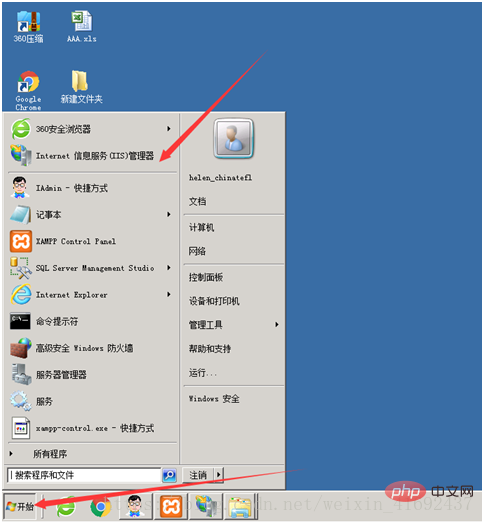
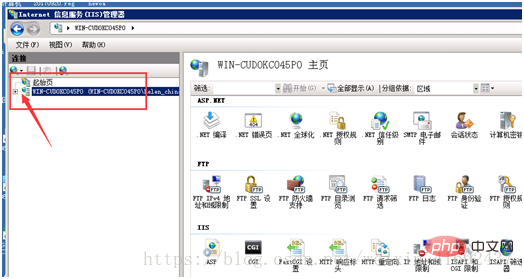

##Due to security considerations, the websites are all large-sized, and the oa and oaphp websites are closed
Then right-click Website, pop-up menu, click Add Website
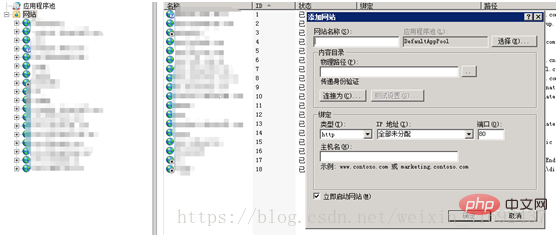
Build the physical path first, and add the files in the physical path
We are changing the address Create a file and write hello world!
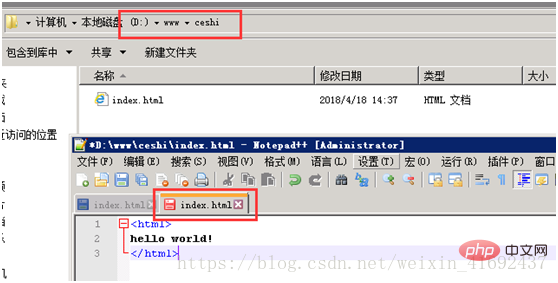 Then click on the iis server and start filling in the information
Then click on the iis server and start filling in the information
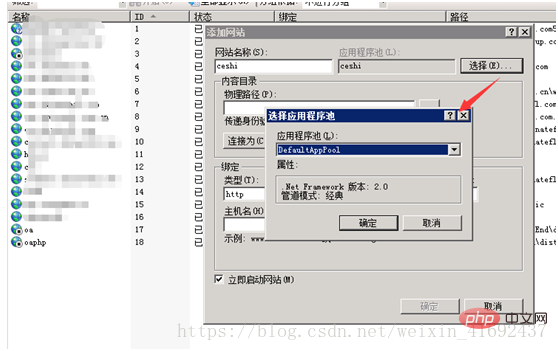
The website name is just the name that appears in your website list
For example, oa;oaphp
The application pool can be set as the default, then select it and start adding it The physical path of the file
Then you can test it
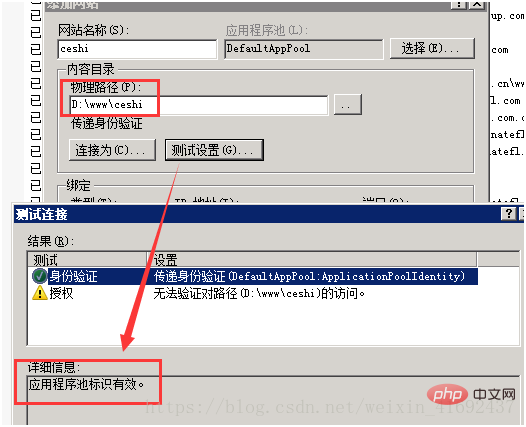
The program pool is valid, because the next step will be performed on the file
The next step is to fill in the website name. If you have a registered domain name, you can directly fill in the host name. If not, you can choose the IP address plus port number. This method is flexible and can be guaranteed at any time. Build a website anywhere, but there may be some security issues. We will not discuss it here for the time being.
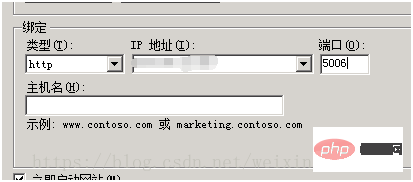 is as follows. Most of the configurations have been completed. All that is needed is to change some properties
is as follows. Most of the configurations have been completed. All that is needed is to change some properties

If you directly enter the IP address and port number in the address bar, an error will be reported

Step 1 , click on the ceshi folder, which is the last directory when you set the physical address of the website, and the root directory
##right click, set
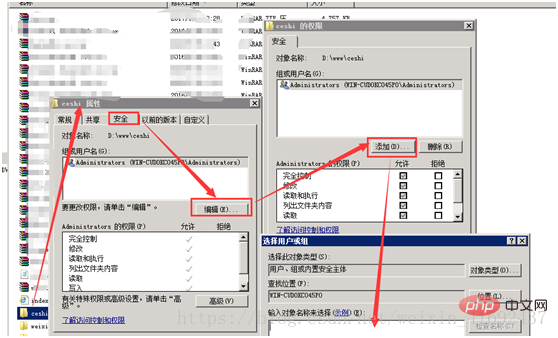 Add information, for example, everyone sets everyone's permissions
Add information, for example, everyone sets everyone's permissions
## to 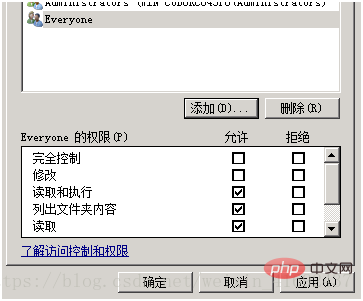
Then confirm and continue to set up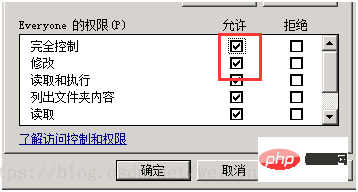
The second step is to open the corresponding port number
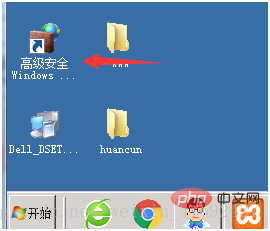 Click on the inbound rules, create a new rule, and fill in 800* for the previously established port
Click on the inbound rules, create a new rule, and fill in 800* for the previously established port
Click the port number you just set up 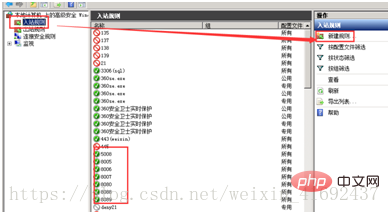
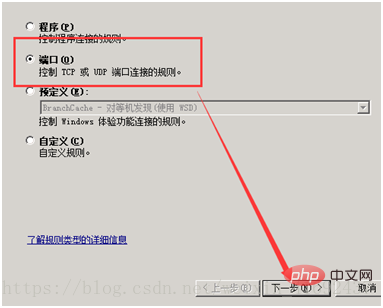
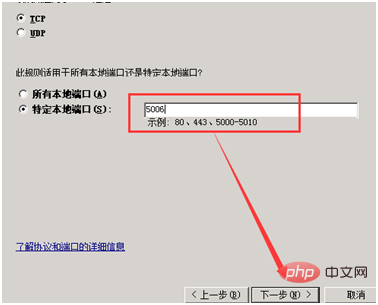
 Then
Then
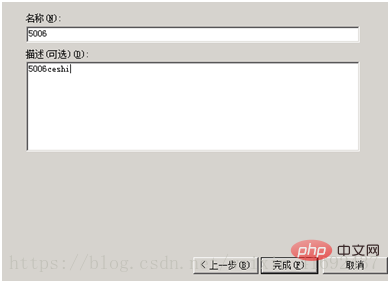
The port number has been established
Continue setting and enter the iis server 
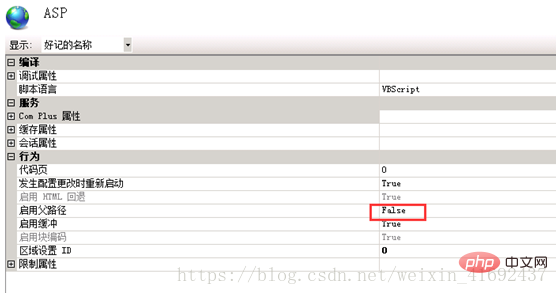
Click false to change it to true
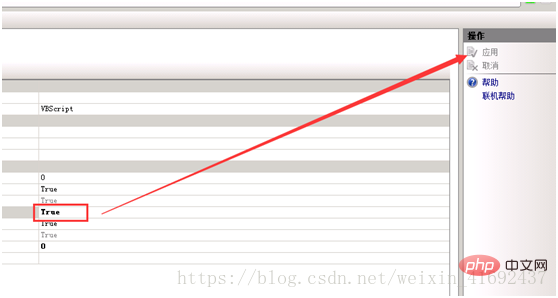
(Answer, you just clicked OK, so It is displayed in gray)
Click the application to take effect
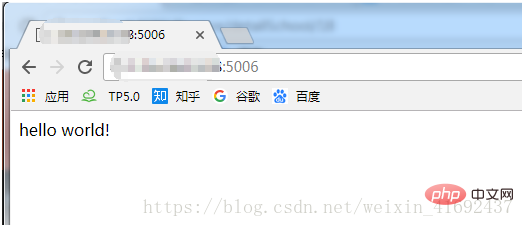
Go back to your own computer, or change to another computer, log in to the external network, and you can see Go to
If it involves large-scale deployment of PHP, Java and other languages, you can set up your own configurations. This article will stop here.
You can also enter the right side of the iis server , make relevant settings
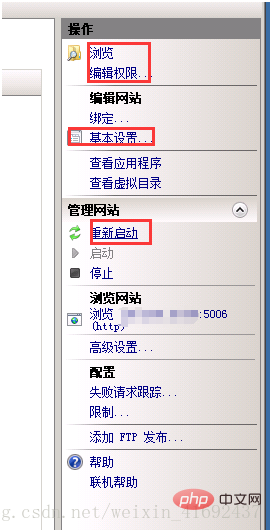
The above is the detailed content of Introducing iis to build a simple website. For more information, please follow other related articles on the PHP Chinese website!

Hot AI Tools

Undresser.AI Undress
AI-powered app for creating realistic nude photos

AI Clothes Remover
Online AI tool for removing clothes from photos.

Undress AI Tool
Undress images for free

Clothoff.io
AI clothes remover

Video Face Swap
Swap faces in any video effortlessly with our completely free AI face swap tool!

Hot Article

Hot Tools

Notepad++7.3.1
Easy-to-use and free code editor

SublimeText3 Chinese version
Chinese version, very easy to use

Zend Studio 13.0.1
Powerful PHP integrated development environment

Dreamweaver CS6
Visual web development tools

SublimeText3 Mac version
God-level code editing software (SublimeText3)

Hot Topics
 1665
1665
 14
14
 1423
1423
 52
52
 1321
1321
 25
25
 1269
1269
 29
29
 1249
1249
 24
24
 IIS in Action: Real-World Examples and Use Cases
Apr 14, 2025 am 12:12 AM
IIS in Action: Real-World Examples and Use Cases
Apr 14, 2025 am 12:12 AM
IIS's real-world applications include in-business departmental websites, high-traffic e-commerce websites and API gateways. 1) In-business departmental websites utilize the powerful features of IIS and seamless integration with Windows systems, 2) High-traffic e-commerce websites improve user experience by configuring load balancing and using ARR, and 3) IIS manages and protects API access through URL rewriting and reverse proxying.
 Does IIS Support PHP? The Answer and Setup
Apr 19, 2025 am 12:01 AM
Does IIS Support PHP? The Answer and Setup
Apr 19, 2025 am 12:01 AM
Yes,IISsupportsPHP.Tosetitup:1)InstallPHPbydownloadingandextractingittoyourserver.2)ConfigureIISbyaddingaPHPhandlerinIISManager.3)TestPHPbycreatingandaccessingatest.phpfilewithphpinfo()function.
 The Compatibility of IIS and PHP: A Deep Dive
Apr 22, 2025 am 12:01 AM
The Compatibility of IIS and PHP: A Deep Dive
Apr 22, 2025 am 12:01 AM
IIS and PHP are compatible and are implemented through FastCGI. 1.IIS forwards the .php file request to the FastCGI module through the configuration file. 2. The FastCGI module starts the PHP process to process requests to improve performance and stability. 3. In actual applications, you need to pay attention to configuration details, error debugging and performance optimization.
 IIS and the Microsoft Ecosystem: Integration and Advantages
May 02, 2025 am 12:17 AM
IIS and the Microsoft Ecosystem: Integration and Advantages
May 02, 2025 am 12:17 AM
IIS integration with the Microsoft ecosystem includes a tight integration with ASP.NET, Azure, and SQLServer. 1) IIS integrates with ASP.NET to provide a powerful hosting environment, supporting load balancing and SSL. 2) Through AzureAppServices, IIS can be quickly deployed to the cloud and achieve automatic scaling. 3) IIS and SQLServer integrate to ensure safe and efficient data access. Through these integrations, IIS improves development efficiency, system performance, security and management ease.
 The Purpose of IIS: Serving and Managing Web Content
Apr 15, 2025 am 12:12 AM
The Purpose of IIS: Serving and Managing Web Content
Apr 15, 2025 am 12:12 AM
IIS is a web server software developed by Microsoft to host and manage websites. 1) IIS can handle static and dynamic content, 2) Provide management tools that seamlessly integrate with Windows, 3) Support HTTP, FTP, SMTP and other protocols, 4) Provide security functions such as SSL/TLS encryption, and 5) Optimize website performance through load balancing, caching, etc.
 IIS and PHP: The Steps for Successful Integration
Apr 13, 2025 am 12:07 AM
IIS and PHP: The Steps for Successful Integration
Apr 13, 2025 am 12:07 AM
The integration of IIS and PHP can be achieved through the following steps: 1. Install PHP, 2. Add PHP handler in IIS, 3. Test the configuration. After integration, IIS will pass the PHP file request to the PHP interpreter for execution and return the result to the client to achieve efficient web services.
 IIS and PHP: Exploring the Compatibility
Apr 18, 2025 am 12:11 AM
IIS and PHP: Exploring the Compatibility
Apr 18, 2025 am 12:11 AM
IIS is compatible with PHP and is implemented through the FastCGI module. 1.IIS supports PHP through the FastCGI module, making PHP run as an independent process. 2. Configuring IIS to run PHP requires defining the handler in the configuration file. 3. Basic usage includes enabling the FastCGI module and setting up PHP handlers. 4. Advanced usage can configure PHP environment variables and timeout settings. 5. Common errors include version incompatibility and configuration issues, which can be diagnosed through logs. 6. Performance optimization is recommended to adjust the PHP process pool size and enable OPcache.
 Running PHP on IIS: A Practical Tutorial
Apr 16, 2025 am 12:10 AM
Running PHP on IIS: A Practical Tutorial
Apr 16, 2025 am 12:10 AM
Running PHP applications on a Windows server is feasible and practical. 1) Install and configure IIS, 2) Integrate PHP through FastCGI, 3) Solve common problems such as MIME type configuration and extended loading, 4) Optimize performance settings using OpCache and FastCGI, 5) Follow PHP best practices such as using namespaces and PSR standards.




